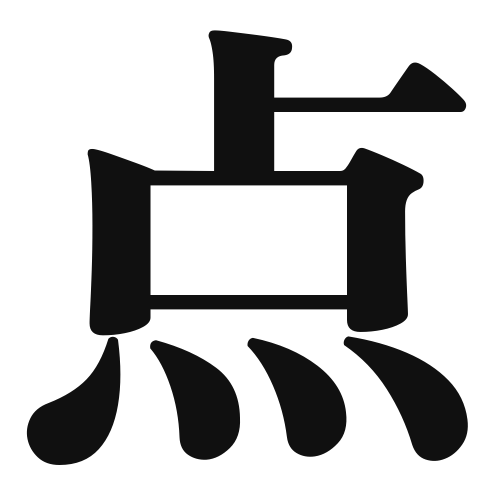1. Overview of Meaning
The kanji “点” (ten) primarily means “point” or “dot.” It can refer to a small mark, a specific location, or a unit of measurement in various contexts.
2. Formation and Radical
Formation of the Kanji: The kanji “点” is a phonetic-ideographic character (形声文字). It combines the meaning of a dot or point with a phonetic component that suggests its pronunciation.
Radical: The radical for “点” is “火” (hi), which means “fire.” This radical is often associated with light or small marks, contributing to the overall meaning of “点.”
3. Examples of Usage
Common Words and Phrases: Some frequently used words that include “点” are:
- 点数 (てんすう, tensuu) – score or points
- 点検 (てんけん, tenken) – inspection
- 点滴 (てんてき, tenteki) – drip (as in medical drip)
Example Sentences in Daily Conversation:
- この絵にはたくさんの点があります。 (このえにはたくさんのてんがあります。) – This painting has many dots.
- テストの点数はどうだった? (テストのてんすうはどうだった?) – How was your score on the test?
4. Synonyms and Antonyms
Similar Kanji: A similar kanji is “点滴” (tenteki), which also involves the concept of small points but refers specifically to medical drips.
Antonyms: An antonym could be “面” (men), which means “surface” or “face,” representing a larger area as opposed to a small point.
5. Cultural and Historical Background
Relation to Japanese Culture: The concept of “点” is significant in various aspects of Japanese culture, including art and calligraphy, where precision and detail are highly valued.
Proverbs and Idioms: One common idiom is “点を打つ” (てんをうつ, ten o utsu), which means “to make a point” or “to emphasize,” reflecting the importance of clarity in communication.
